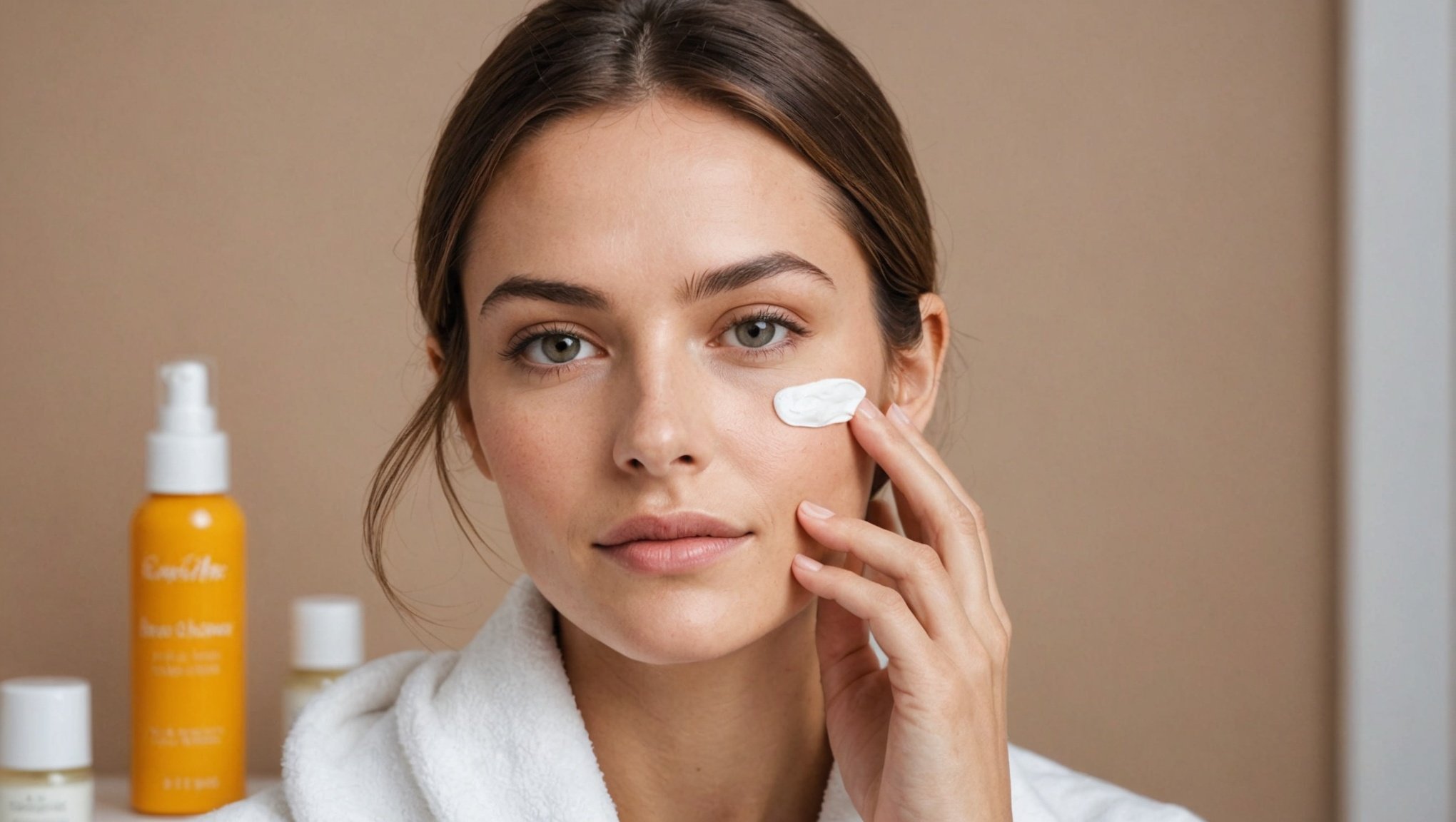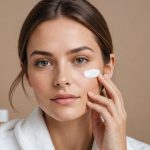The world of skincare can be a labyrinth. With a plethora of products promising you the moon, it can be overwhelming to know where to start. However, a basic rule of thumb is that the order in which you apply your skincare products does matter. Just as a nourishing breakfast kick-starts your day, a well-layered skincare routine activates and prepares your skin for the day ahead. Herein lies the importance of layering your skincare products effectively. It’s not just about what products you use, but also about when and how you apply them.
Understand Your Skin Type
Before diving into the sequence of using skincare products, it’s essential to understand your skin type. Your face is not a one-size-fits-all canvas. What works for your best friend or favorite beauty blogger may not work for you. It’s crucial to identify whether your skin is oily, dry, combination, sensitive, or normal.
This might interest you : How Can You Preserve the Color of Your Black Jeans Through Multiple Washes?
Once you have identified your skin type, you can select suitable products. For instance, a lightweight moisturizer may suffice for oily skin, while dry skin may require a more emollient cream. A gentle, non-foaming cleanser might be a better choice for sensitive skin, while normal or combination skin can typically tolerate most cleanser types.
Step-by-step Morning Skincare Routine
Mastering the art of layering skincare products begins with understanding the basics of a morning skincare routine. It’s generally recommended to follow a sequence of cleansing, toning, applying serum, eye cream, moisturizer, and sunscreen.
Also read : What Are the Most Fashionable Eco-Friendly Bags for Spring?
-
Cleanser: Start your morning routine by washing your face with a suitable cleanser. It’s essential to remove any remnants of night cream or oil and provide a clean slate for your morning skincare regimen.
-
Toner: A toner helps remove any residual cleanser and balances the pH of your skin to prepare it for other products.
-
Serum: The third step is to apply a serum. Serums are concentrated with active ingredients like hyaluronic acid or vitamin C. They penetrate deeper into the skin and deliver a high concentration of active ingredients.
-
Eye Cream: Apply an eye cream to address any specific concerns you have around your eyes, such as dark circles or puffiness.
-
Moisturizer: Next, it’s time for a moisturizer. It seals in the products you’ve applied so far and provides a barrier against environmental stressors.
-
Sunscreen: Lastly, even if your moisturizer or makeup has SPF, it’s essential to apply a standalone sunscreen to ensure you’re getting adequate protection.
Choose Products with Beneficial Ingredients
Choosing the right products with beneficial ingredients is a game-changer in your skincare routine. Look for a cleanser with gentle surfactants that won’t strip your skin of its natural oils. Your serum should contain active ingredients that target your specific concerns – perhaps it’s hyaluronic acid for hydration, retinol for anti-aging, or vitamin C for brightening.
Moisturizers should contain ingredients that lock in hydration and provide a protective barrier, such as ceramides and hyaluronic acid. And of course, your sunscreen should offer broad-spectrum protection, shielding your skin from both UVA and UVB rays.
Applying Products Correctly
It’s not just about what you apply, but also how you apply your skincare products. Always apply products with a gentle hand, in upward strokes. This can help combat gravity and prevent dragging and sagging of the skin.
Serums, which are usually thin and water-based, should be applied before thicker, creamier products. This allows the active ingredients to penetrate more deeply into the skin. When applying eye cream, use your ring finger to lightly pat the product into the skin. The skin around your eyes is delicate, and this technique can prevent pulling or tugging.
In terms of moisturizer and sunscreen, be generous. Most people don’t apply enough, which may reduce the effectiveness of these products. Also, don’t forget to extend these products down your neck and decolletage.
Adapt Your Routine to Your Skin’s Needs
Finally, it’s important to listen to your skin and adapt your routine as needed. If your skin is feeling particularly dry, you may want to add a face oil for extra nourishment. On the other hand, if your skin feels congested or oily, you might use a clay mask to draw out impurities.
Remember to be patient: it can take time to see results from a new skincare routine. And, as always, if you experience persistent skin problems, it’s best to consult with a dermatologist.
In the end, the best skincare routine is one that you’ll stick to. By understanding your skin type, selecting products with beneficial ingredients, applying products correctly, and adapting your routine to your skin’s needs, you can optimize your morning skincare routine and embrace the day with a healthy, glowing complexion.
Addressing Specific Skin Concerns
In addition to the basic steps of a skincare routine, you may want to include products that address specific skin concerns. These might range from acne and blackheads to fine lines and wrinkles, or from hyperpigmentation to redness and sensitivity. Understanding your skin type and concerns can help you choose the right products and incorporate them effectively into your skincare routine.
If you are dealing with acne, look for products containing salicylic acid, benzoyl peroxide, or sulfur. These can help unclog pores and reduce inflammation. For those with blackheads, a BHA (beta hydroxy acid) exfoliant can help dissolve the oil that causes these pesky spots.
When it comes to addressing signs of aging, products with anti-aging ingredients like retinol, peptides, and antioxidants can help reduce the appearance of fine lines and wrinkles. Vitamin C is also a popular ingredient for its brightening effect and its ability to boost collagen production.
Hyperpigmentation, including age spots and post-acne marks, can be addressed with products that contain brightening ingredients like hydroquinone, kojic acid, and niacinamide. For redness and sensitivity, look for products with soothing ingredients like oatmeal, aloe vera, and centella asiatica.
Remember, it’s essential to introduce new products into your routine slowly, especially if your skin is sensitive. Start by using a new product once or twice a week, and gradually increase usage as your skin tolerates it. If you experience any irritation, discontinue use and consult with a dermatologist.
The Importance of Evening Skincare
Your morning skincare routine prepares your skin for the day ahead, but your evening routine is equally important. At night, your skin goes into repair mode, healing and regenerating itself. Using the right skincare products can help this process and ensure you wake up with a fresh, glowing complexion.
Your evening routine should start with removing any makeup and cleansing your skin to remove dirt, oil, and impurities. You can use the same cleanser as in the morning, or opt for a more deep-cleansing formula if needed.
Next, apply a toner to balance your skin’s pH and prepare it for the rest of your routine. If your skin can tolerate it, you might incorporate an exfoliating acid toner a few nights a week to help remove dead skin cells and reveal a brighter complexion.
After toning, apply a serum targeted to your skin’s specific needs. At night, you might choose a retinol serum to help accelerate skin cell turnover and reduce fine lines, or a hydrating serum with hyaluronic acid to deeply moisturize your skin.
Last but not least, seal in all the goodness with a nourishing moisturizer or a face oil. If you are using both, apply the moisturizer first, let it absorb, and then apply the oil on top.
Conclusion
Navigating the world of skincare can be daunting, but with a little knowledge and patience, you can create an effective skincare routine that serves your skin’s unique needs. Remember to understand your skin type, choose products with beneficial ingredients, apply them in the right order, and give them time to work. Consider addressing specific skin concerns and never underestimate the power of a good night’s skincare routine.
With a consistent skincare routine and a little patience, you can achieve a radiant, healthy complexion. And remember, it’s not about achieving perfection, but about treating your skin with care and respect. So whether your skincare routine includes three steps or ten, make sure it’s a routine that suits you and your lifestyle. After all, the best skincare routine is the one that you will stick to.











